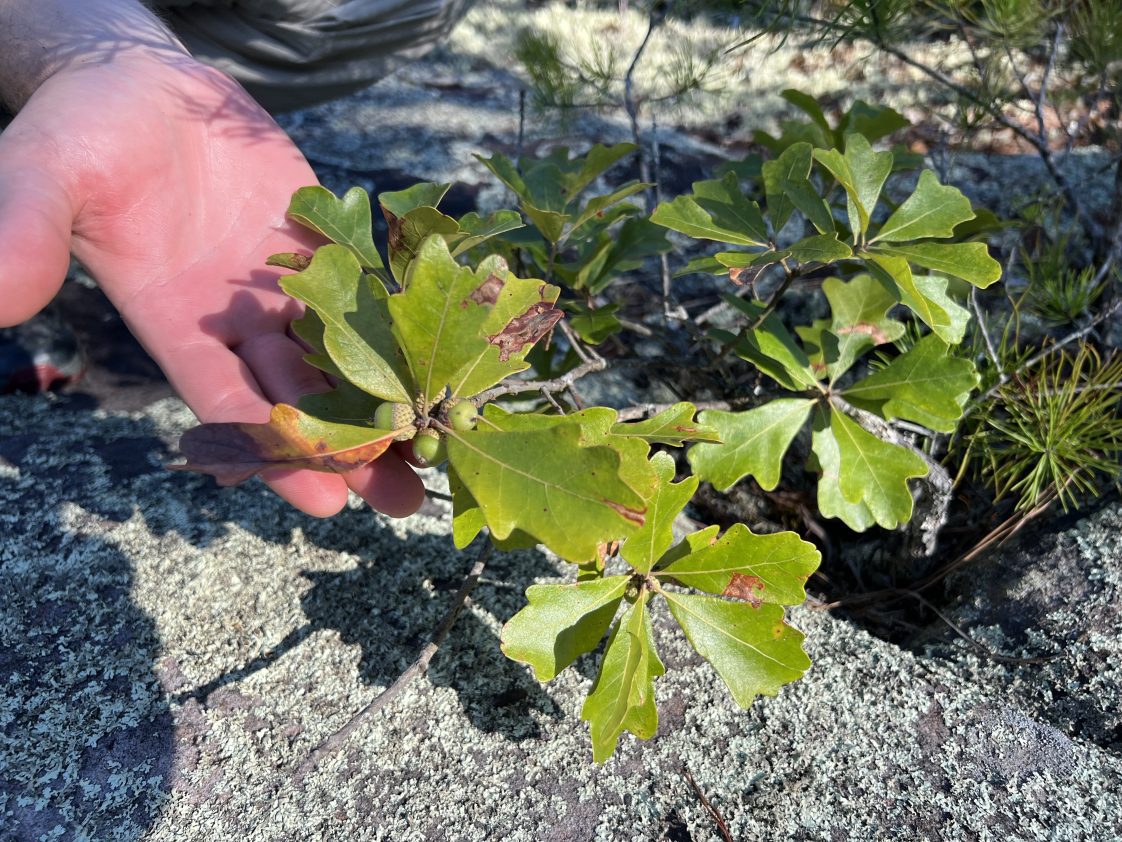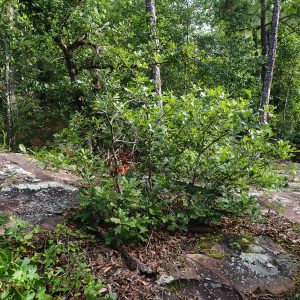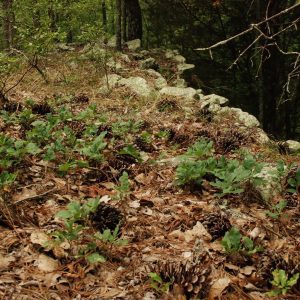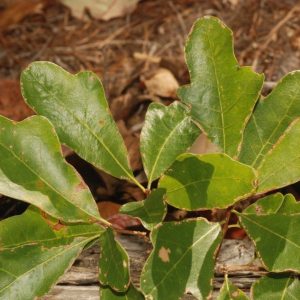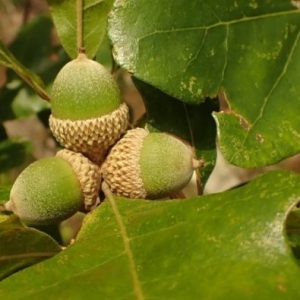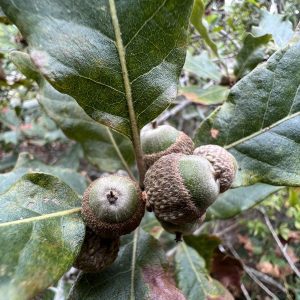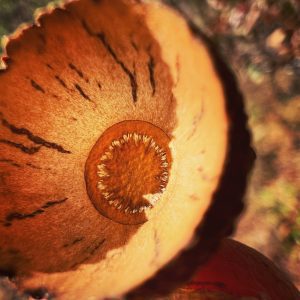Alabama 4-H

Alabama is home to 39 species of oak trees—many of these species are well-known trees. Lesser known are several species that are smaller in stature and relatively uncommon. Because the leaves of young oak trees often look so different from mature oak foliage, even experienced foresters and naturalists often do not try to identify them. As a result, small species are often overlooked or mistaken for more widespread species. An example of one of these smaller, or dwarf, species is the rare Alabama Sandstone Oak (Quercus boyntonii), a tree that only occurs in Alabama (figure 1).
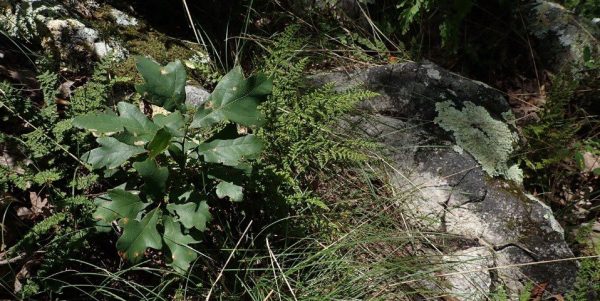
Figure 1. The Alabama Sandstone Oak (Quercus boyntonii) tree occurs only in Alabama, where it infrequently grows on sandstone outcrops, primarily in the Ridge and Valley physiographic province.
History
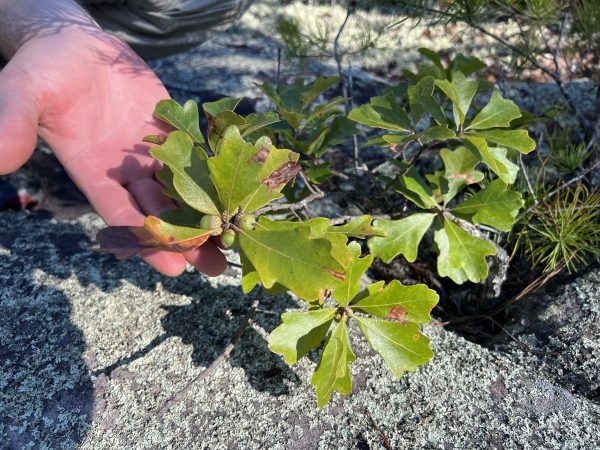
Figure 2. A small but mature Alabama Sandstone Oak producing acorns.
The Alabama Sandstone Oak was first discovered in 1901 in Etowah County by botanists from the Biltmore Estate in North Carolina. While traveling through north Alabama, they reported many shrubby/small tree specimens (figure 2) thought to be a new species of oak from sandstone outcrops near Noccalula Falls (now a public park in Gadsden). This species was also reported from Texas in the early 1900s, but the records have not been verified since.
In 1998, the Alabama Sandstone Oak was documented to occur in just three counties. Since then, it has been documented in six additional Alabama counties.
Habitat and Range
Found most typically on sandstone outcrops (figure 3) in the Cumberland Plateau and Ridge and Valley physiographic provinces in Alabama from Birmingham to Gadsden, Alabama Sandstone Oaks also occur in pine/oak/hickory savannas (for example, within Oak Mountain State Park) and closed canopy forests and rocky riverbanks (for example, the Locust Fork drainage).
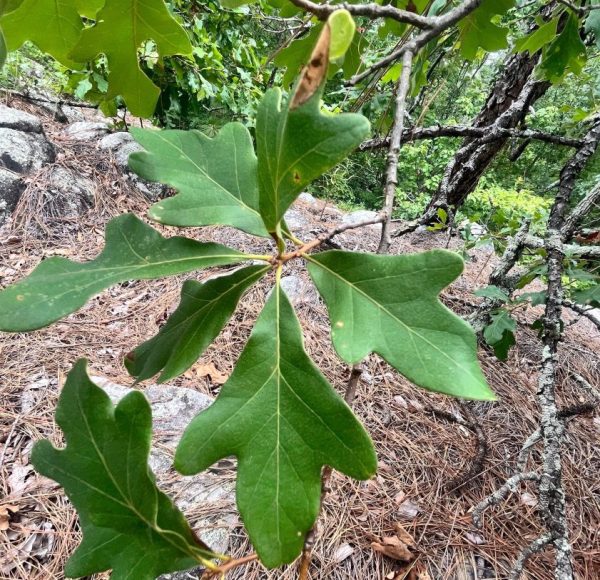
Figure 3. Sandstone outcrop in north Alabama.
Single occurrences have been reported from Chilton (2005) and Autauga (2020) counties, which are significant because they are the first reports of this species from the Coastal Plain of Alabama.
The known population of this species in the wild is currently around 1,200 individuals. The Alabama Sandstone Oak has a predictably small population because it occupies an uncommon habitat in a small native range (sandstone outcrops in nine counties). The species population has been severely impacted by habitat loss caused by the establishment and growth of the Birmingham metropolitan area.
Physical Description
The Alabama Sandstone Oak is a member of the white oak group (subsection Quercus) that can reach a height of 15 to 20 feet. It grows as a single- or multi-stemmed small tree or shrub (figure 4) or as spreading ground cover (figure 5).
Leaves
- Deciduous
- Slightly coriaceous (leathery)
- Typically, obovate with three rounded to cruciform (cross-shaped) lobes (figure 6), but occasionally five to seven lobed.
- Sparse to densely pubescent with stellate (star- shaped) hairs on the underside of the leaf. Dark green above.
Twigs
- Pubescent
- Light brown
Buds
- Reddish-brown
- Ovoid (egg-shaped)
- Rounded
Fruit
- Acorn varies in length (10 to 18 millimeters) and width (8 to 13 millimeters).
- Acorn ranges from rounded to pointed.
- Cupule (acorn cap) covers from a quarter (figure 7) to more than half (figure 8) of the acorn.
- Cupule has a ciliate (hairs projecting out) margin (figure 9).
- Figure 4. Alabama Sandstone Oak can be found growing as a multi-stemmed shrub.
- Figure 5. Alabama Sandstone Oaks can exhibit clonal growth with a patchy stoloniferous (at soil surface or just below) growth habit.
- Figure 6. Typical three-lobed Alabama Sandstone Oak leaves.
- Figure 7. Cupule covering a quarter of the acorn.
- Figure 8. Cupule covering more than half of the acorn.
- Figure 9. Inside view of the Quercus boyntonii acorn cupule.
Similar Species
- Water Oak (Q. nigra)
- Blackjack Oak (Q. marilandica)
- Sand Post Oak (Q. margaretta)
The Alabama Sandstone Oak co-occurs with these similar species and is believed to hybridize with the Sand Post Oak. This provides an identification challenge to biologists seeking to census the species. Current research efforts based at the Morton Arboretum utilize genetic analysis of oaks to improve our understanding of the identity of plants that occur in these hybrid zones where physical descriptions of species overlap.
Conservation Efforts
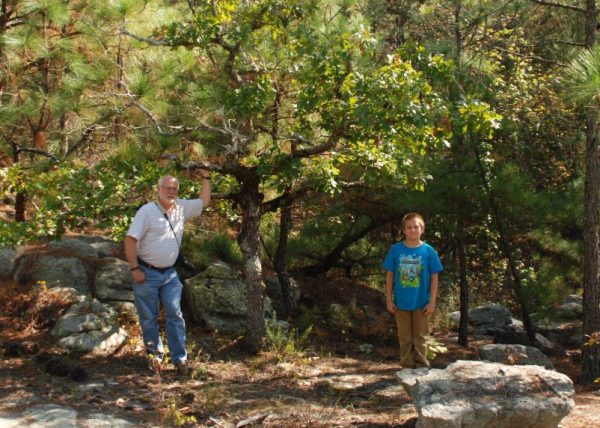
Figure 10. A large population of Alabama Sandstone Oak from Oak Mountain State Park.
In addition to continued habitat loss, Alabama Sandstone Oaks suffer pressure from invasive plant species, and the shallow soils they occupy on rock outcrops are susceptible to extreme weather events such as heat
and drought.
Recent land acquisitions by the State of Alabama protect the two largest known populations of the Alabama Sandstone Oak. This includes additions to Oak Mountain State Park (2022) (figure 10) and the purchase of the Hinds Road Outcrop by the Forever Wild Program (2015).
Auburn University Donald E. Davis Arboretum and the Huntsville Botanical Garden continue to carefully propagate this species by selectively collecting acorns for repositories and outgrowth. Acorns are distributed to various secure botanical gardens and arboreta to be grown for conservation safeguarding and research. The acorns are kept in living collections because they cannot be stored long-term in a seedbank. The United States Forest Service also has an effort to establish an acorn orchard to produce enough acorns to augment wild populations and make the species available to the public.
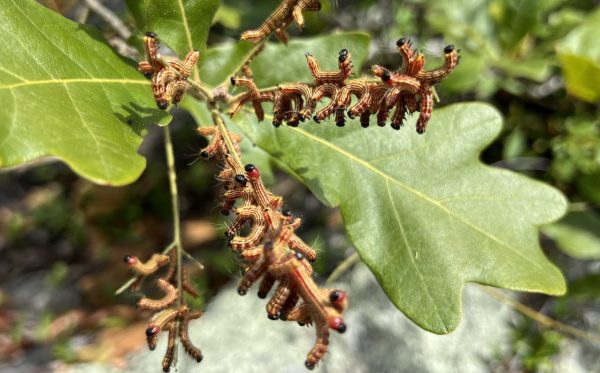
Figure 11. Oaks support numerous species including these Datana caterpillars.
The Alabama Sandstone Oak is the only tree species endemic to Alabama. Groups including the Global Conservation Consortium for Oak and the International Oak Society support work to preserve this species, but no one has a better chance to protect this critically imperiled species than the people of Alabama.
If you find what you think might be Alabama Sandstone Oak, you may record observations using citizen science apps like iNaturalist or by contacting the Auburn University Donald E. Davis Arboretum. These reports help scientists better understand how and where this rare species grows. Promoting awareness of rare species like this one help to ensure their protection.
- Learn more by visiting the Auburn University Donald E. Davis Arboretum website at https://www.auburn.edu/cosam/arboretum.
 Emily Nichols, Extension Specialist, Alabama 4-H, and Patrick Thompson, Curator, Donald E. Davis Arboretum, both with Auburn University
Emily Nichols, Extension Specialist, Alabama 4-H, and Patrick Thompson, Curator, Donald E. Davis Arboretum, both with Auburn University
New July 2023, Alabama’s Unique Dwarf Oak, 4HYD-2522

